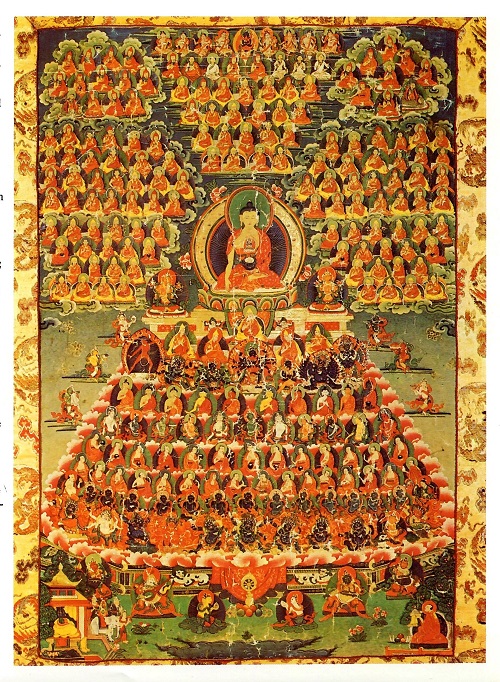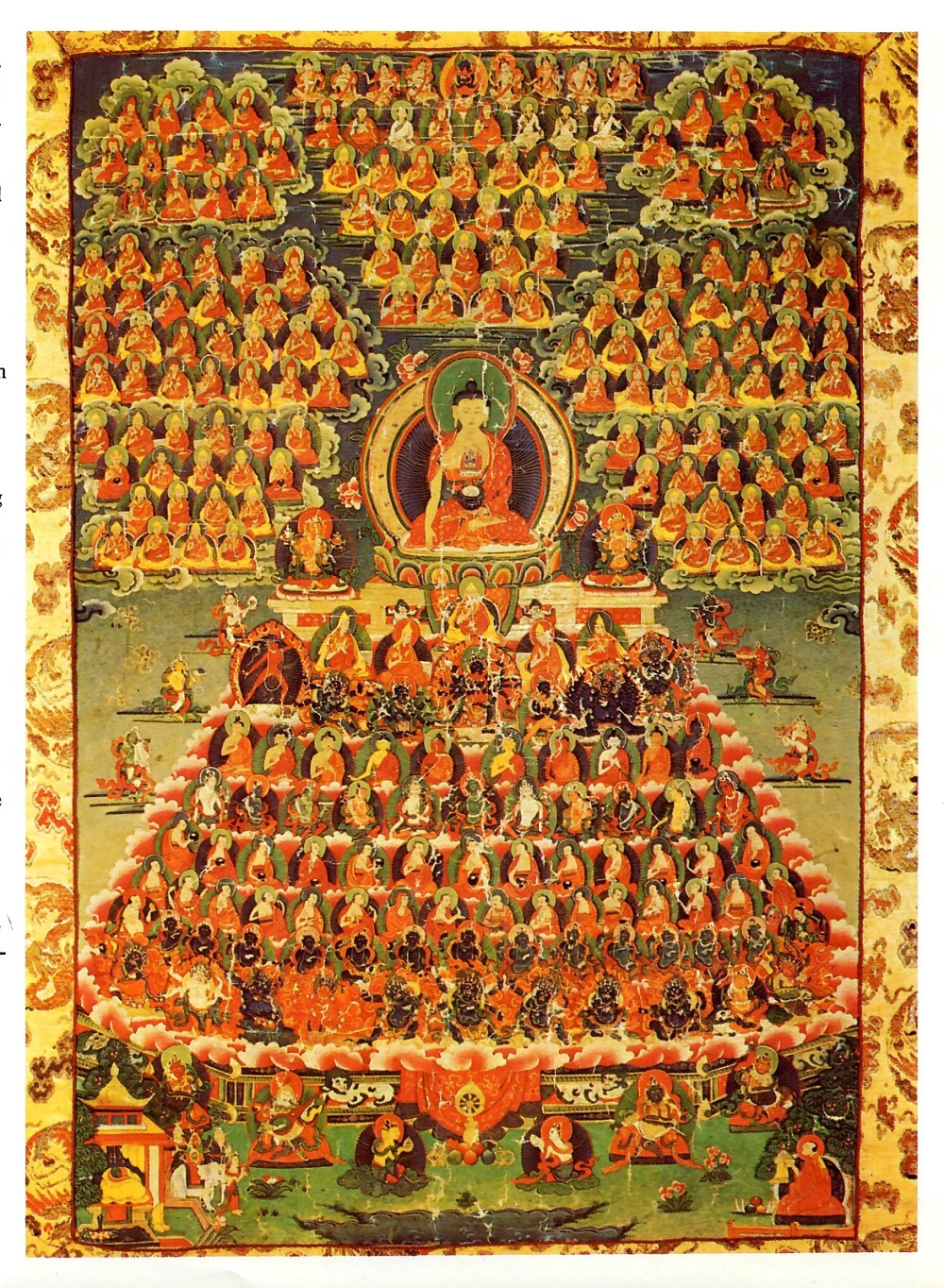The Great Assembly

The below larger thanka is a spherical portrayal of the Paths of Buddhism. It illustrates another version of the Great Assembly grouped around Buddha Shakyamuni (Lam-rim Tshogs-zhing). The spiritual initiators, propagators and protectors of Mahayana Buddhism are portrayed in the Zenith, in the Nadir and in all directions in the various heavenly, worldly and Tantric manifestations. And in the heart of Buddha Shakyamuni appears the image of Vajradhara Dorje-chang (rDo-rje hChang). He is represented in Yab- Yum, embracing his mystic partner (Prajna), who symbolizes highest comprehension. He is the heavenly form of the Adi-Buddha (Thog-mahi Sangs-rgyas) and represents the fivefold sublime wisdom of the Dhyani-Buddhas.
Dorje-chang’s image in Yab-Yum appears also on top of the Thanka (in the middle), presiding over the group above Buddha (Nyams-len Byin-rLab brGyud): this illustrates the spiritual descent of the teachings of the Absolute and Relative Truth, the comprehension of the Twin-unity of Contrasts. This doctrine is inspired by Dorje-chang and leads to Buddha Shakyamuni, who promulgated it.
This picture-roll is a help in meditating with the utmost spiritual concentration on a full understanding of the teachings. It, therefore portrays the spiritual line of the Gurus (bLa-brGyud) from the heavenly inspirer to the earthly teachers and their disciples. This is further illustrated by the two Bodhisattvas, flanking Buddha’s lotos throne. Manjushri is enthroned to the left, with book and sword. He is the heavenly Guru of the spiritual lineage of the teachings of Absolute Truth (Za-mo ITa- brGyud). Its followers are depicted to the left of Buddha. To the right of Buddha’s lotos throne we see Maitreya with the white Chdrten on a lotos flower. He is the Buddha of the future, the heavenly Guru of the teachings on Relative Truth and the head of the spiritual line of those teachings (rGya-chen sPyod-brGyud). This is the deeper significance of this beautiful meditation Thanka of the Great Assembly headed by Buddha Shakyamuni.

Adibuddha
Skt., adibuddha: Self-originated Buddha
Tib., thog-mahi Sangs-rgyas (Thogma Sangya)
- The self-originated, aboriginal or “Primordeal Buddha” on the dharmakaya level of being. Although intrinsically unmanifested and invisible, he is represented and visualized in one or two celestial manifestations: Vajradhara (Tib., Dorjechang, rDo-rJe-hChang; “diamond holder”) and/or Vajrasattva (Tib., rDo-rje sems-dpa’; “diamond nature”).
- In the oldest texts and among the Nyingmapa, it is Samantabhadra who is regarded as the dharmakaya-level Adi-buddha.